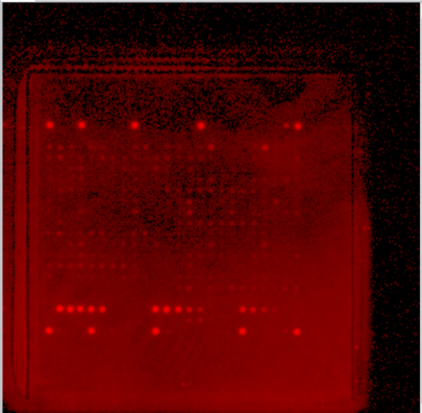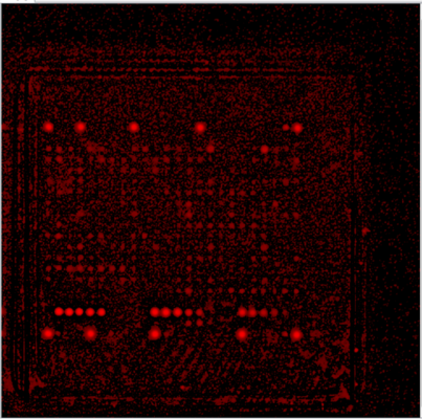1. Introduction
Noise processing is a crucial step in microarray image analysis. If noise misleads the spots’ pattern, it may fail subsequent procedures such as grid alignment and spot finding. This article discusses a background noise processing technique based on spot morphology, which has proved successful for a variety of microarray image data. In this article, we will delve into this technique and its application in enhancing the accuracy of microarray image analysis.
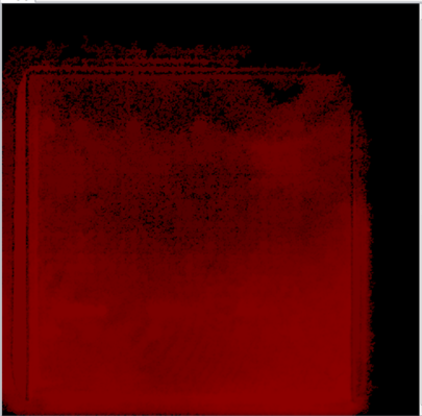
2. Background Noise Processing Technique
The technique focuses on effectively processing background noise based on the morphology of the spots. This method ensures accurate detection of spot signals, independent of shape and position, thereby enhancing the reliability of microarray image analysis.
The following slide image (Figure 1) illustrates the technique. In this image, the background signal varies across the slide. Our objective is to extract the background “layer” (Figure 1, middle), so that only the spot signal remains (Figure 1, right).
3. Spot Morphology
We observe that the spots’ signal is confined to the “square” defined by the horizontal and vertical spacing between two spots. Imagine a microarray image as a matrix of “cones”; we use this square to cut out part of the cone that fits within the square, leaving the remaining as the background layer.
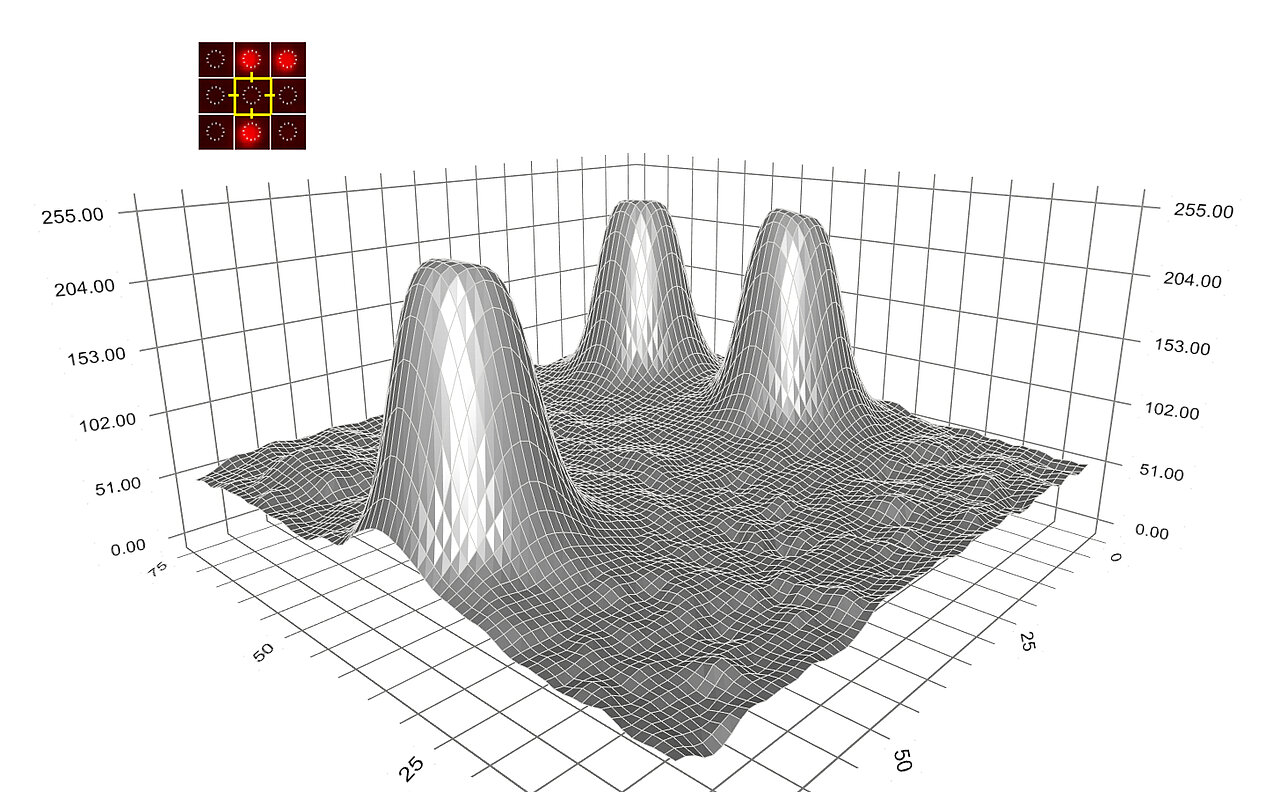
4. Step-by-Step Process
Original Intensity Profile
Consider a block of 9 spots arranged in 3 rows and 3 columns. Their original intensity profile is shown in gray (Figure 2).
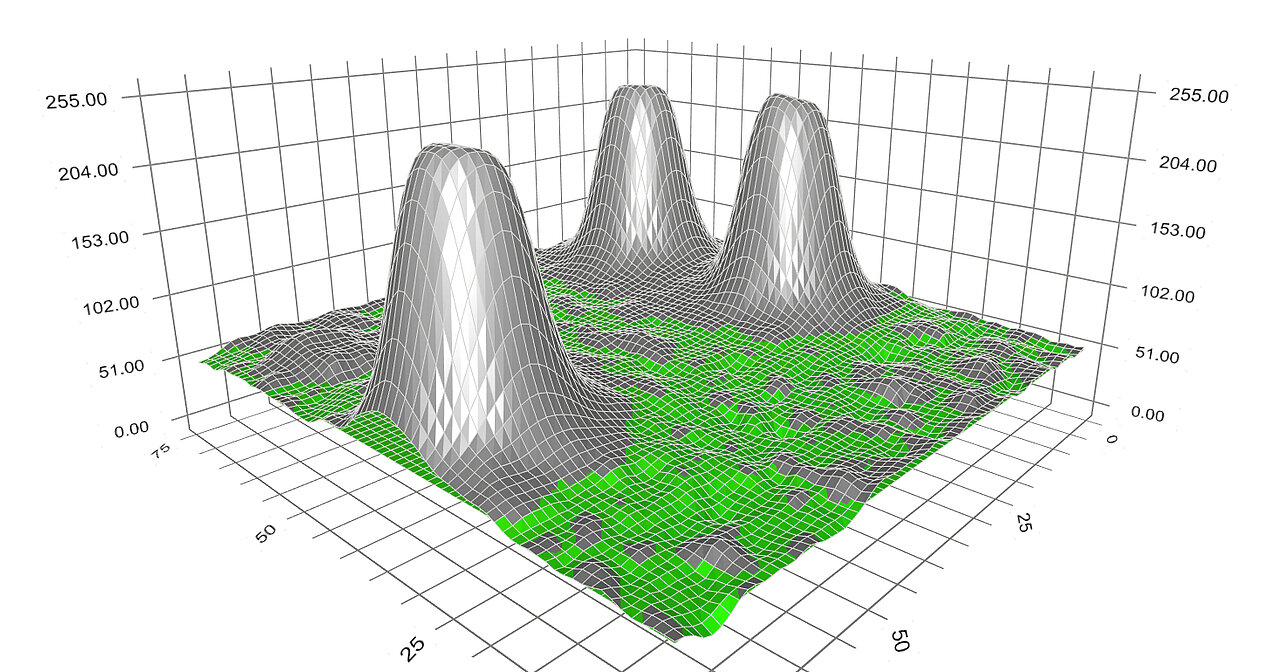
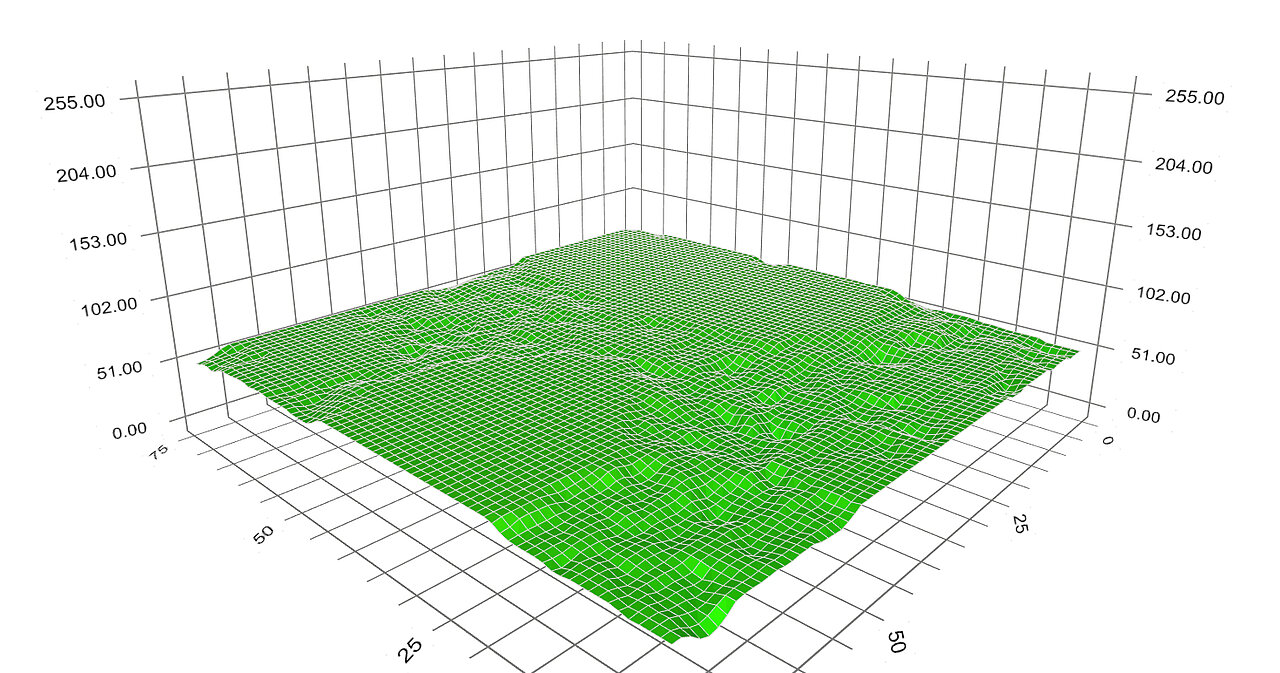
Background Layer Extraction
Based on spot morphology, the background layer can be extracted and is illustrated in green (Figure 3, Figure 4).
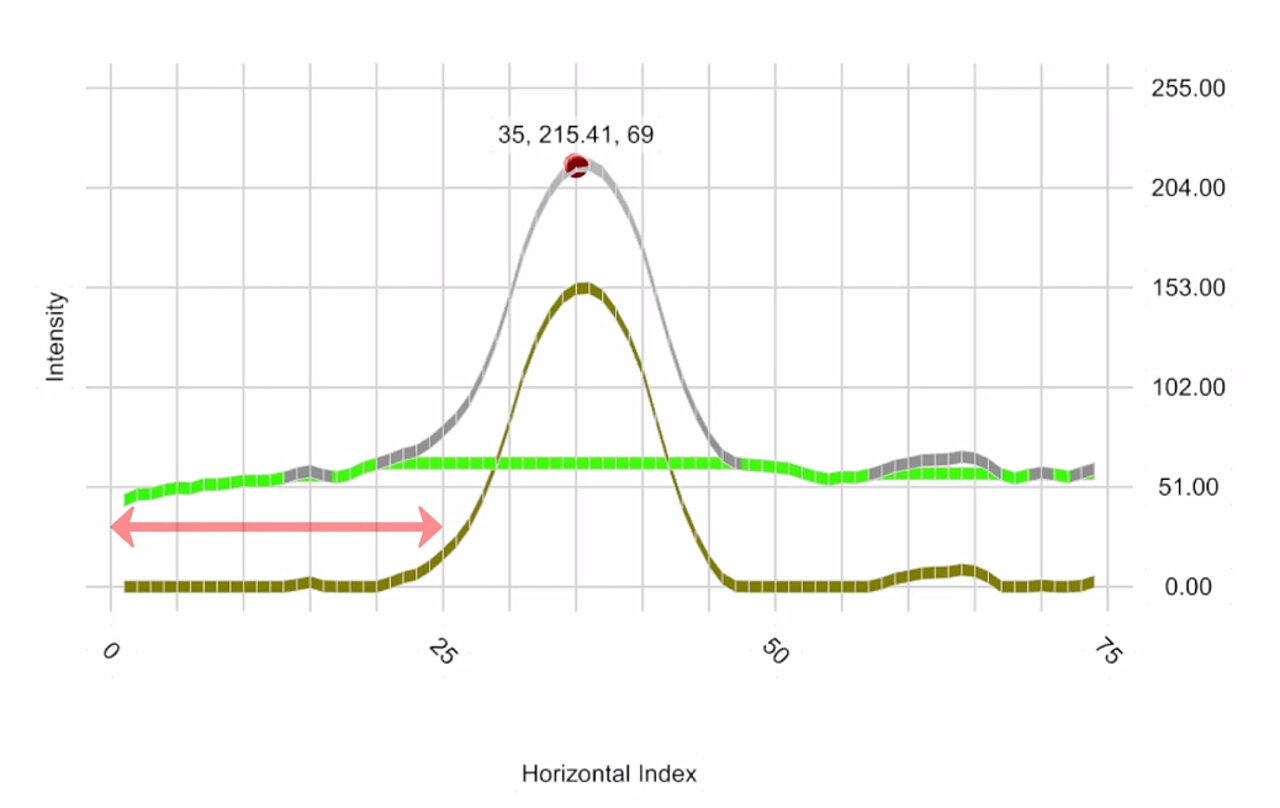
Background Subtraction
We make use of the fact that the spot signal is confined to the square defined by the spot vertical and horizontal spacing, which are 25 pixels here. The background is thus obtained by cutting out peaks whose width is smaller than 25 pixels in the original profile (Figure 5).
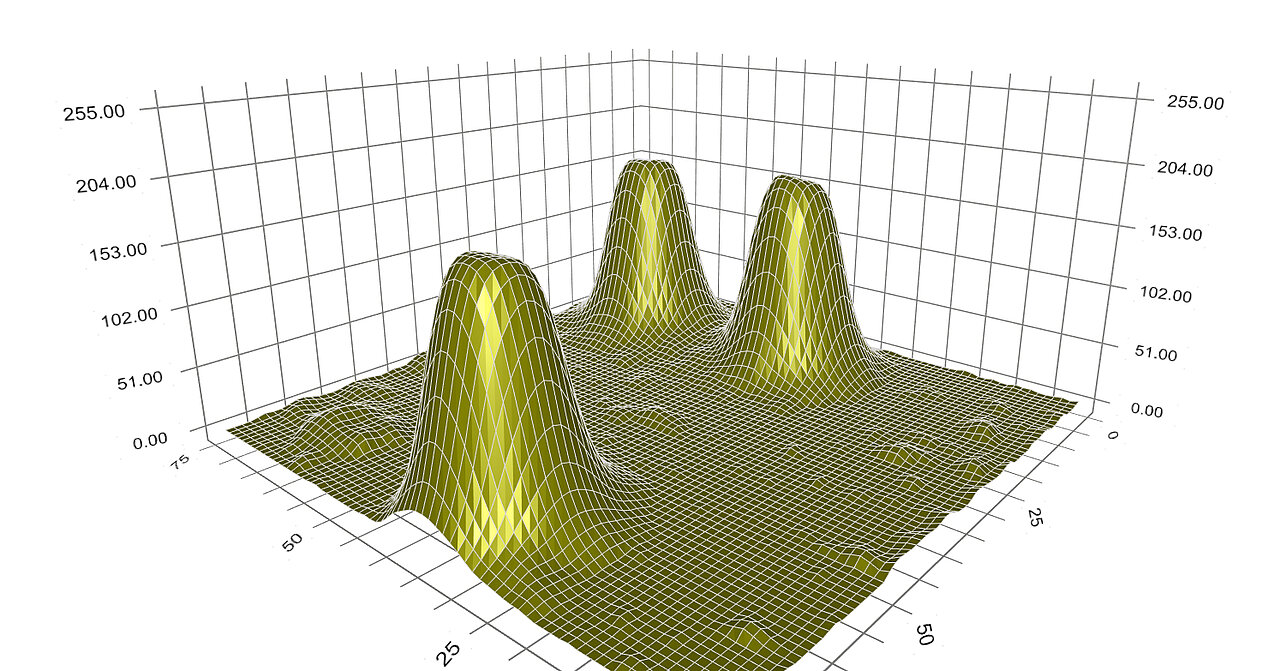
Finally, we subtract the background from the original signal to get the so-called foreground or the background-corrected signal, depicted in dark-yellow (Figure 6).
5. Conclusion
This background noise processing technique based on spot morphology significantly improves the accuracy of microarray image analysis by effectively isolating the spot signal from the background noise. The technique has proved successful with microarray image data, but it could also be useful for image data containing objects in repeating patterns such as rows, columns, or matrices.
For microarray images, this background noise processing is integrated into the quantification function of Spotxel® Microarray software. To learn more about our technologies and methods, please visit our Technologies & Method page. You can also watch the video describing the technique below.

